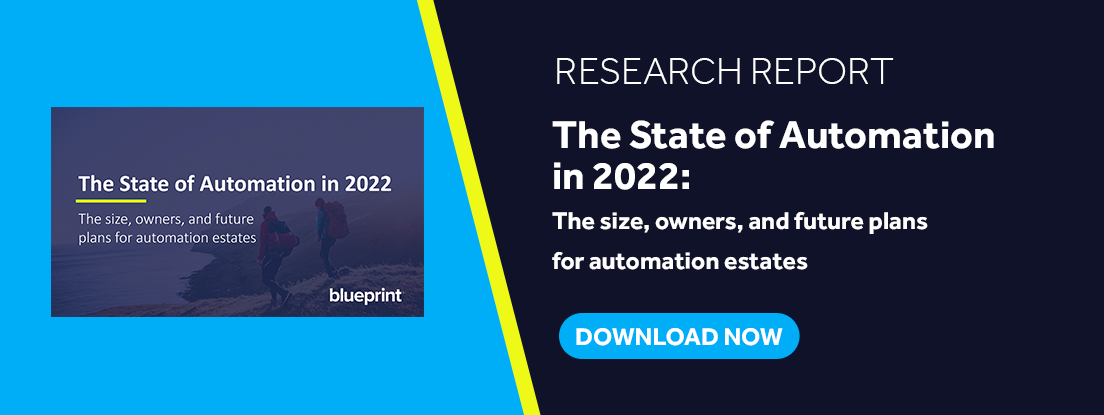5 Automation Trends in 2022
A Recent Blueprint Study Uncovers How Mature Automation Estates Are, Which Automation Platforms are the Most Used, and How Much Organizations are Spending on Automation Annually.
Earlier this year, Blueprint performed extensive research on the state of automation in all industries to understand how the market was evolving and where it was going next. In a survey of 400 automation leaders from around the world, these are the top 5 trends the research uncovered:
Trend #1 – Automation estates are far beyond the adoption phase and have sizeable automation portfolios
On average, the companies surveyed had 120 automated processes in production. The top 10% of respondents claimed they had over 250 automations running.
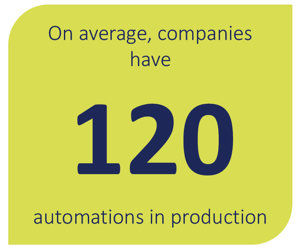
This data indicates that organizations are well beyond the adoption phase of their automation journeys and have reached a level of maturity where they’re keen on improving their current estates.
The next stage in their automation lifecycle is not about ramping up automation delivery. While scale remains a primary objective, most organizations are looking to increase their return on investment, enable intelligent automation, and ease the technical complexity of automation design and delivery to facilitate scale.
Trend #2 – Next-generation automation platforms are the most used because they offer better capabilities and are more cost-effective
According to Blueprint's research, the most common automation platform respondents reported using was Microsoft Power Automate. There are several reasons for this unsurprising phenomenon.
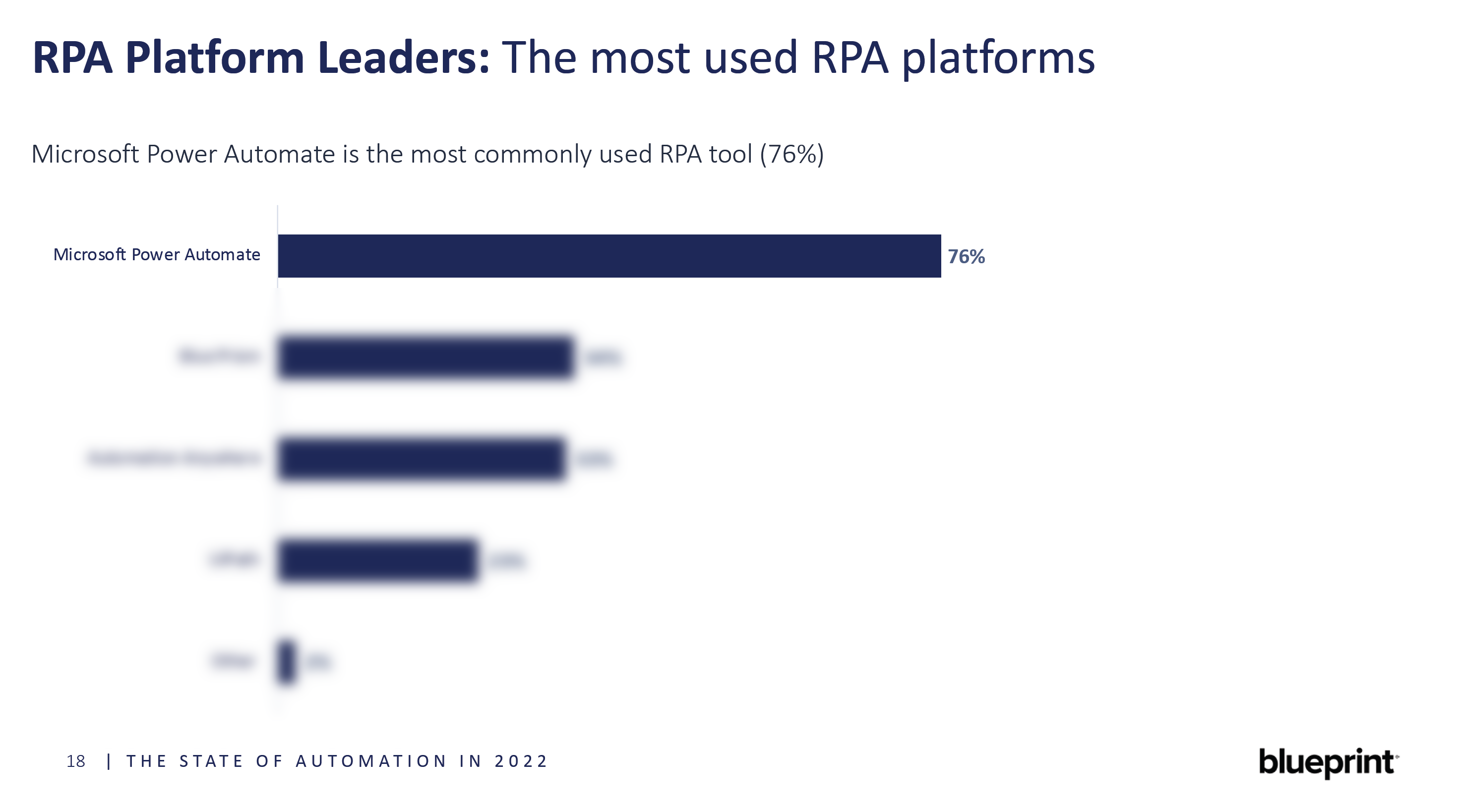
The simplest explanation is that even though Microsoft is a relatively new entrant in the automation software segment, they offer a very cost-effective solution and even included a free version of Power Automate in Windows 10 (even though scheduling and orchestrating automated processes is a paid add-on).
Another reason Microsoft is so common is not only because they go a long way in reducing automation’s total cost of ownership, but because they offer so many out-of-the-box connectors. These connectors make it easy to automate processes that interact with the rest of the Microsoft suite of products that saturate all industries. Power Automation also makes automation more accessible to the average business user with a more intuitive drag and drop UX (user experience) to design and develop automations.
Interestingly enough, many respondents reported using multiple automation platforms in their RPA programs, increasing the likelihood that Microsoft Power Automate would be one of them, which we get into next.
Learn More: The 4 Reasons Some Companies Use a Multi-Platform RPA Strategy
Trend #3 – A high percentage of organizations are using multi-platform strategies
40% of all those surveyed reported using more than one automation platform to design and deploy automated processes.
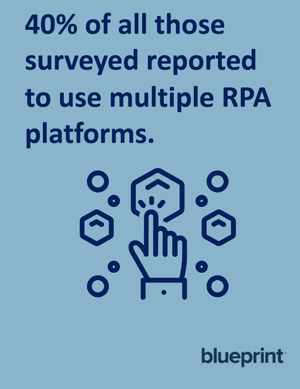
The reasons organizations use more than one platform to manage and grow their automation estate is because:
- Specialized automation tools are used for specific use cases
- Different business units or departments adopted automation at different times and had their own unique preferences
- Different tools offer better compatibility with their enterprise architecture
Related to the last reason for multiple automation platforms being used in the same organization is why there’s such a surge in Microsoft Power Automate adoption. Because of Microsoft's range and footprint in all businesses, RPA programs are experimenting with Power Automate and building net new automations there but haven’t switched operations entirely, leading us to the next trend.
Trend #4 – The desire to re-platform automations estates and switch tools is very strong
26% of all those surveyed reported that they had already switched automation platforms. Out of the remaining research participants, a sizeable 74% claimed that they were in the process of or at least considering switching automation technology providers.
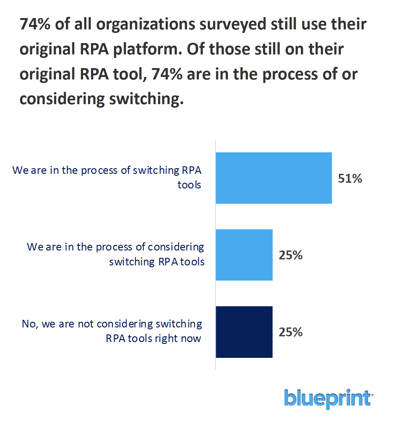
We’ve briefly covered some of the reasons that are driving them to switch automation platforms, but there are other key factors they cite. In a previous report – Process Modernization in 2022 – that Blueprint published, there is detailed insight and analysis into what’s motivating transitions between automation platforms which you can download here.
Trend #5 – The cost of ownership for automation is still high
According to Blueprint's survey results, the cost of ownership or operational expense (OpEx) for automation is still relatively high. On average, organizations spend $480,000 on automation annually; however, 13% of respondents – most of which represent enterprise organizations with headcounts over 10,000 – reported that they spend over $1 million yearly on automation.
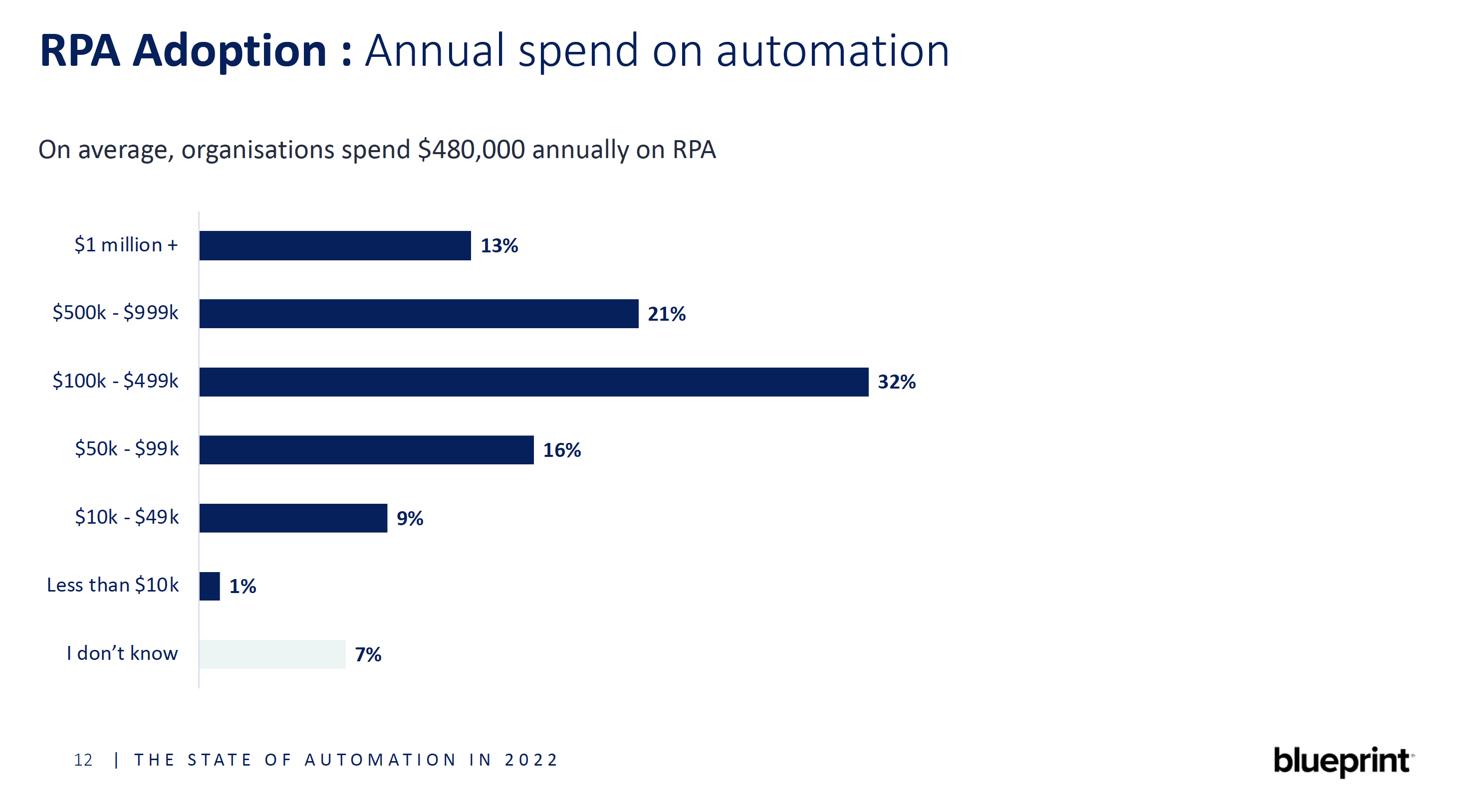
High costs and rising OpEx are some of the main reasons organizations are looking for more cost-effective options in the market that will yield higher-quality automations. It’s why cloud-native automation platforms like Microsoft’s Power Automate and Automation Anywhere’s Automation 360 are garnering so much attention.
This was just a snippet of all the insight and data that Blueprint’s State of Automation in 2022 research report has to offer. For all the in-depth findings and analysis, download the full report here.
Share this
Recent Stories

The Top 7 RPA Trends of 2023

The Top 4 Reasons Organizations Are Opting for RPA Migrations in 2023


